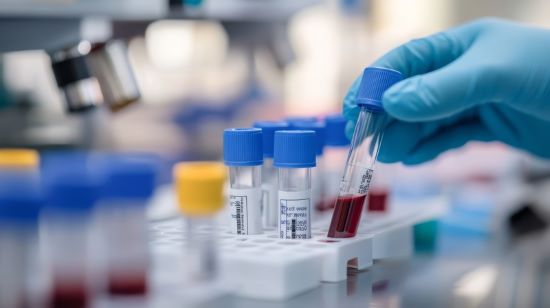Until I contracted COVID-19 I was a regular whole-blood donor five times a year. COVID infected my heart and ended what I considered to be an important voluntary act that I had started after my daughter was born with congenital heart disease and needed blood transfusions. Her need coincided with the tainted blood supply scandal that led to a national commission and changes to the collection and administration of blood products in Canada. To understand the risks to my daughter and to learn about the collection system I started to donate whole blood regularly.
Red blood cells aren’t like other cells in our bodies. They don’t have a nucleus. Their essential function is to transport oxygen throughout the body. To do this their mass is largely filled with hemoglobin surrounded by a membrane of plasma. Hemoglobin is a protein that contains a molecule of iron. Iron binds with oxygen. It is the iron combined with oxygen that makes our blood red. It also causes iron exposed to the air to rust.
Every healthy red blood cell contains hemoglobin molecules that bind with four oxygen molecules to form oxyhemoglobin. The circulatory system efficiently delivers oxyhemoglobin to our body tissues whose cells exhibit chemical changes when oxygen levels drop and carbon dioxide (CO2) levels rise causing the red blood cells to release the oxygen. The hemoglobin then binds with the excess CO2 which gets transported back to be released through the lungs. This iron-based respiratory system has been a part of animal life on Earth for hundreds of millions of years.
A copper-based, blue-blood alternative system uses hemocyanin proteins rather than hemoglobin. Arthropods, snails, spiders, squid, cuttlefish, octopus, and horseshoe crabs use hemocyanin. They are the true blue-bloods of the planet, not to be confused with those given this designation because of noble and aristocratic descent.
An English doctor, William Harvey, is credited with discovering the circulatory system in 1628. In 1659, Christopher Wren invented the syringe for intravenous injections. The year 1666 saw the first successful blood transfusion on animals. Then in 1667, a French physician, Jean-Baptiste Denis, performed the first successful blood transfusion on a human. The first success was followed by a second but then repeated transfusions started to cause patient deaths leading to the government of France banning the practice.
What was causing some to work and others to cause fatalities? The answer remained unknown until Karl Landsteiner, an Austrian physician, biologist and immunologist in 1901 discovered the ABO blood group system for which he later was awarded the Nobel Prize. ABO refers to distinct antigens absent or found on the surfaces of red blood cells. A blood types carry the Anti-A antigen, and B blood types the Anti-B. A third type, AB, has blood cells carrying both Anti-A and Anti-B, while a fourth, O, has none. Transfusion incompatibility experienced by Denis happened because he didn’t know there were distinct blood groups.
Even after ABO blood typing was discovered, mismatches continued to occur. Landsteiner in 1940, along with Alexander Wiener, co-discovered Rhesus or Rh-factor protein on the surface of red blood cells. Named after Rhesus monkeys, the presence of Rh-factor was identified as Rh+. Its absence was identified as Rh negative or Rh-.
Since the Landsteiner and Wiener discoveries, many other proteins have been identified associated with red blood cells. In 2012, the Blood Group Antigen FactsBook listed 33 blood group systems and more than 330 different antigens. Since then, another 13 have been identified.
Blood typing and screening goes beyond the typical 8 known to the public, A+, A-, B+, B-, O+, O-, AB+ and AB-. Other blood-type antigens include:
- Kell (K) and (k) Cellano,
- Duffy designated as Fya and Fyb,
- Kidd identified as Jka and Jkb,
- M, N, and S found on A and B proteins,
- Band 3 identified as SLC4A1,
- Glucose Transporter 1 identified as SLC2A1,
- Glychophorins identified as GYPA and GYPC,
- Aquaporin identified as AQP1,
- Cytoskeletal Spectrin, Ankyrin and Band 4.2.
Transfusion medicine antibody screening and cross-matching take into consideration alloimmunization (often associated with pregnancy) and these other blood antigens.
Now a 47th has been identified with the unveiling of a new blood group system involving the MAL protein. An article announcing the discovery appeared in the journal Blood on August 16, 2024. Researchers from Britain’s University of Bristol identified an antigen designated AnWj associated with the MAL protein.
Patients lacking the antigen were identified as AnWj-. Those with it are designated AnWj+. Some rare hematological disorders and cancers can suppress the antigen which would then induce a transfusion reaction if antibody screening and cross-matching didn’t identify the presence of the antigen.
Senior Research Scientist, Louise Tilley describes the discovery of the MAL protein and AnWJ antigen as a 50-year mystery solved. It involved manipulating gene expression in developing blood cells to identify the blood group.
Does this latest discovery mark the end of the road in advances related to blood transfusions, a century and a quarter after blood types were first discovered? Not likely state researchers who note that advances in genetics and precision and personalized medicine will bring rapid change to blood transfusions including novel blood products such as artificial oxygen-carrying blood replacement, lab-grown red blood cells and platelets from stem cells, and genetic modifications to blood cells that remove transfusion risks.








